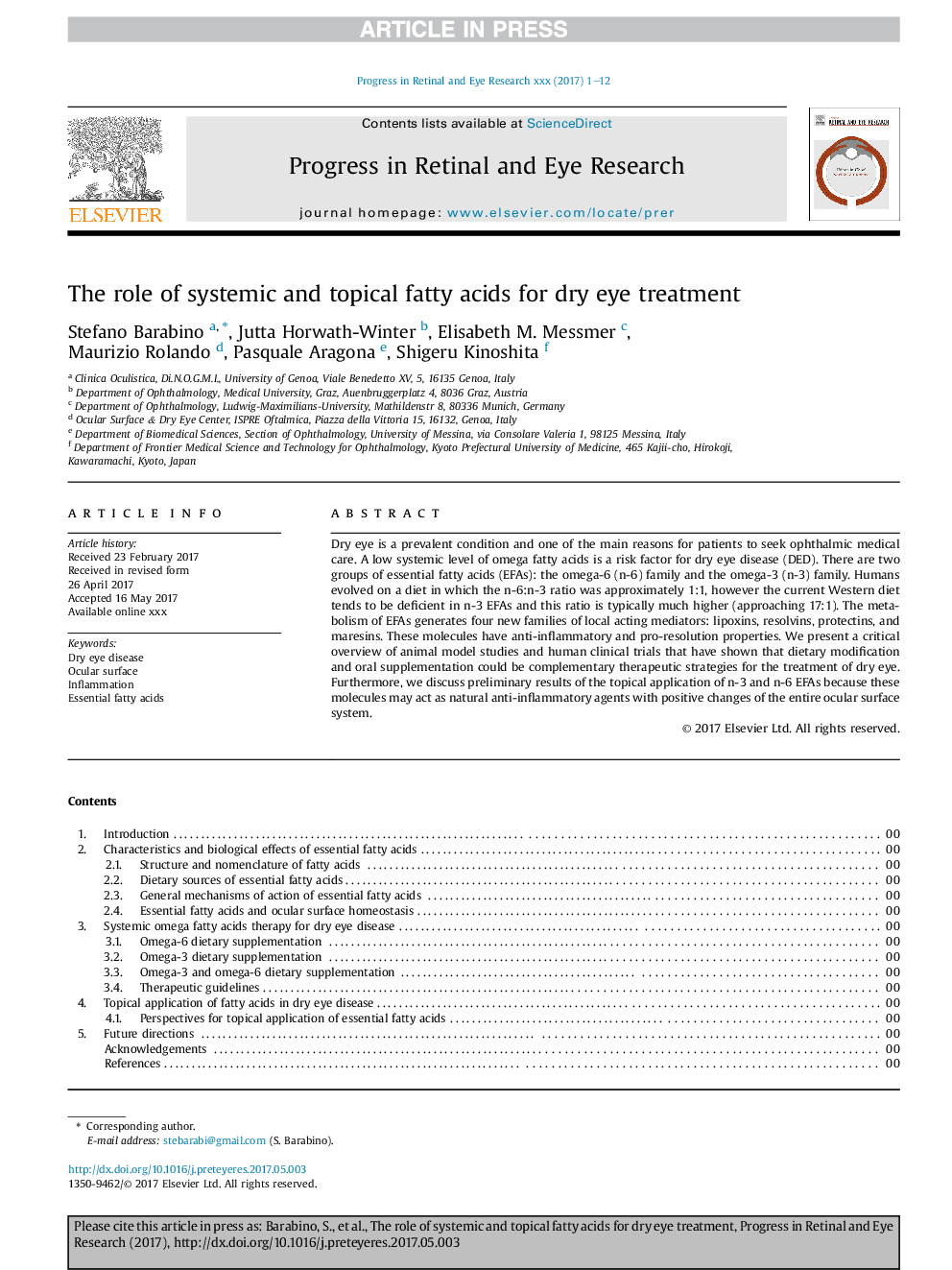| Article ID | Journal | Published Year | Pages | File Type |
|---|---|---|---|---|
| 8795049 | Progress in Retinal and Eye Research | 2017 | 12 Pages |
Abstract
Dry eye is a prevalent condition and one of the main reasons for patients to seek ophthalmic medical care. A low systemic level of omega fatty acids is a risk factor for dry eye disease (DED). There are two groups of essential fatty acids (EFAs): the omega-6 (n-6) family and the omega-3 (n-3) family. Humans evolved on a diet in which the n-6:n-3 ratio was approximately 1:1, however the current Western diet tends to be deficient in n-3 EFAs and this ratio is typically much higher (approaching 17:1). The metabolism of EFAs generates four new families of local acting mediators: lipoxins, resolvins, protectins, and maresins. These molecules have anti-inflammatory and pro-resolution properties. We present a critical overview of animal model studies and human clinical trials that have shown that dietary modification and oral supplementation could be complementary therapeutic strategies for the treatment of dry eye. Furthermore, we discuss preliminary results of the topical application of n-3 and n-6 EFAs because these molecules may act as natural anti-inflammatory agents with positive changes of the entire ocular surface system.
Related Topics
Life Sciences
Neuroscience
Sensory Systems
Authors
Stefano Barabino, Jutta Horwath-Winter, Elisabeth M. Messmer, Maurizio Rolando, Pasquale Aragona, Shigeru Kinoshita,
